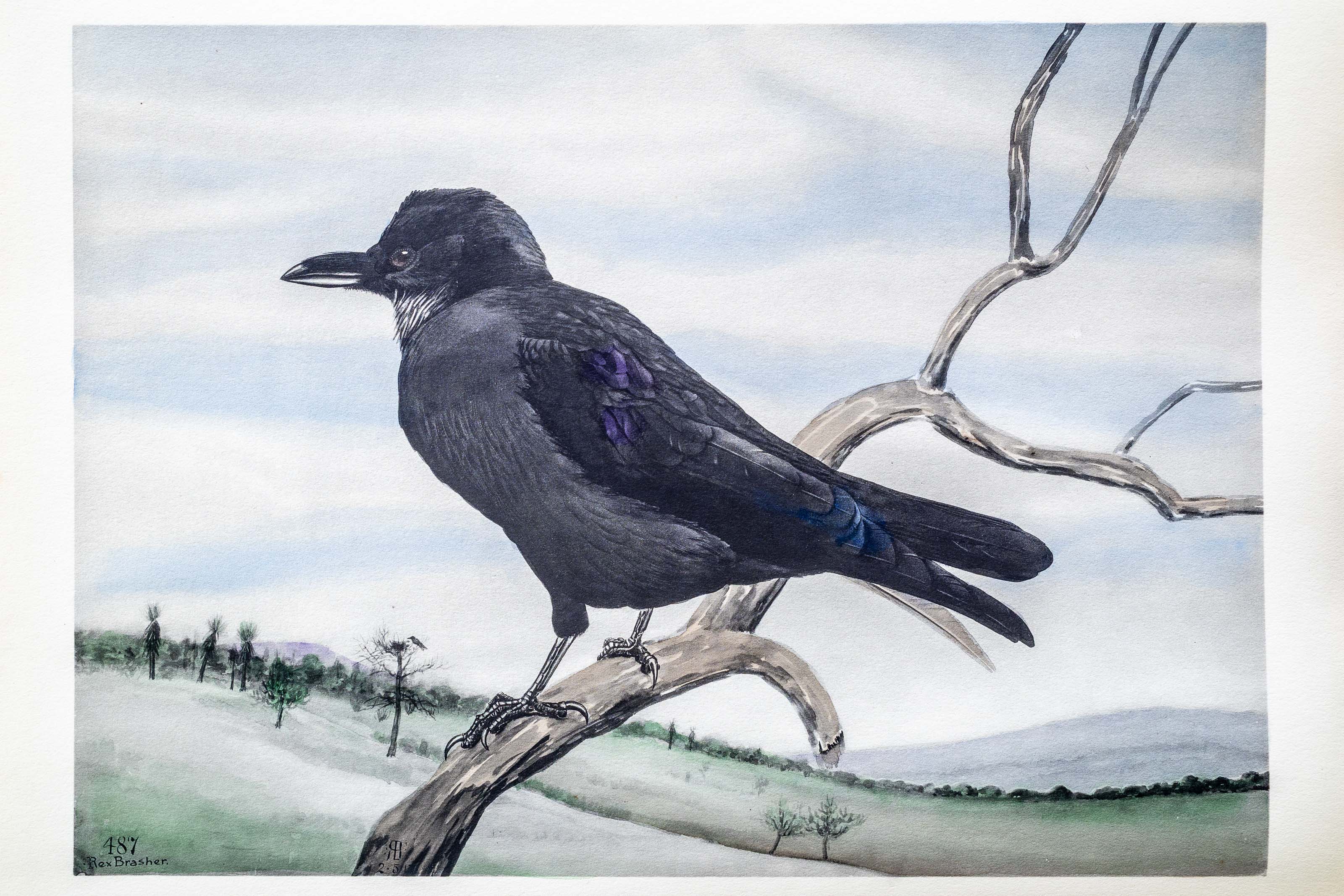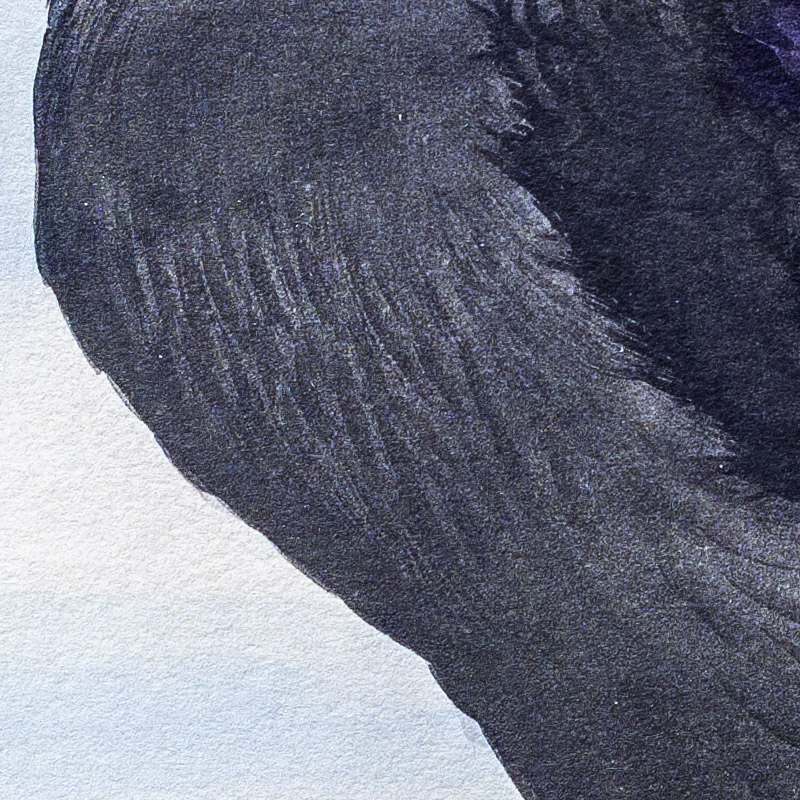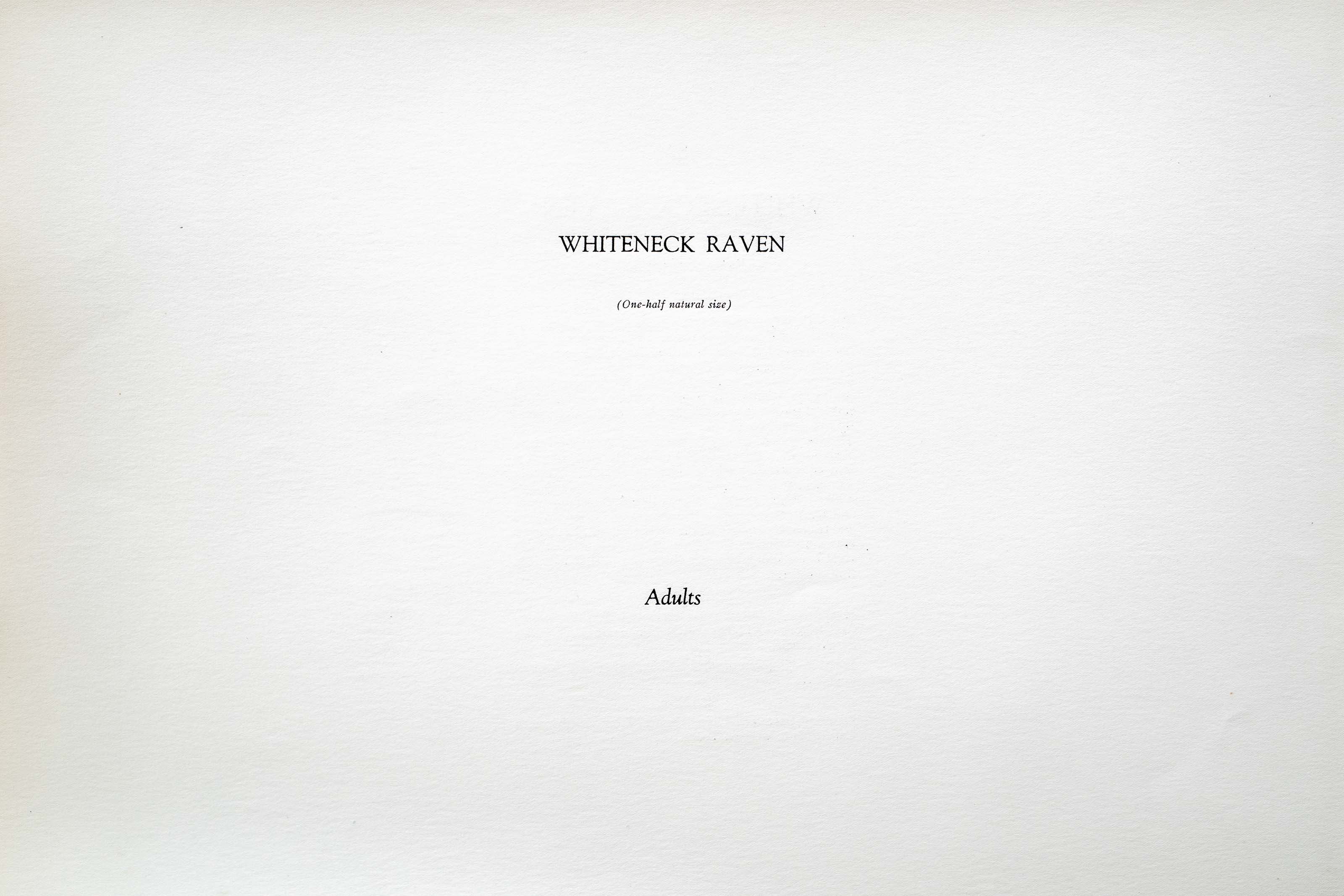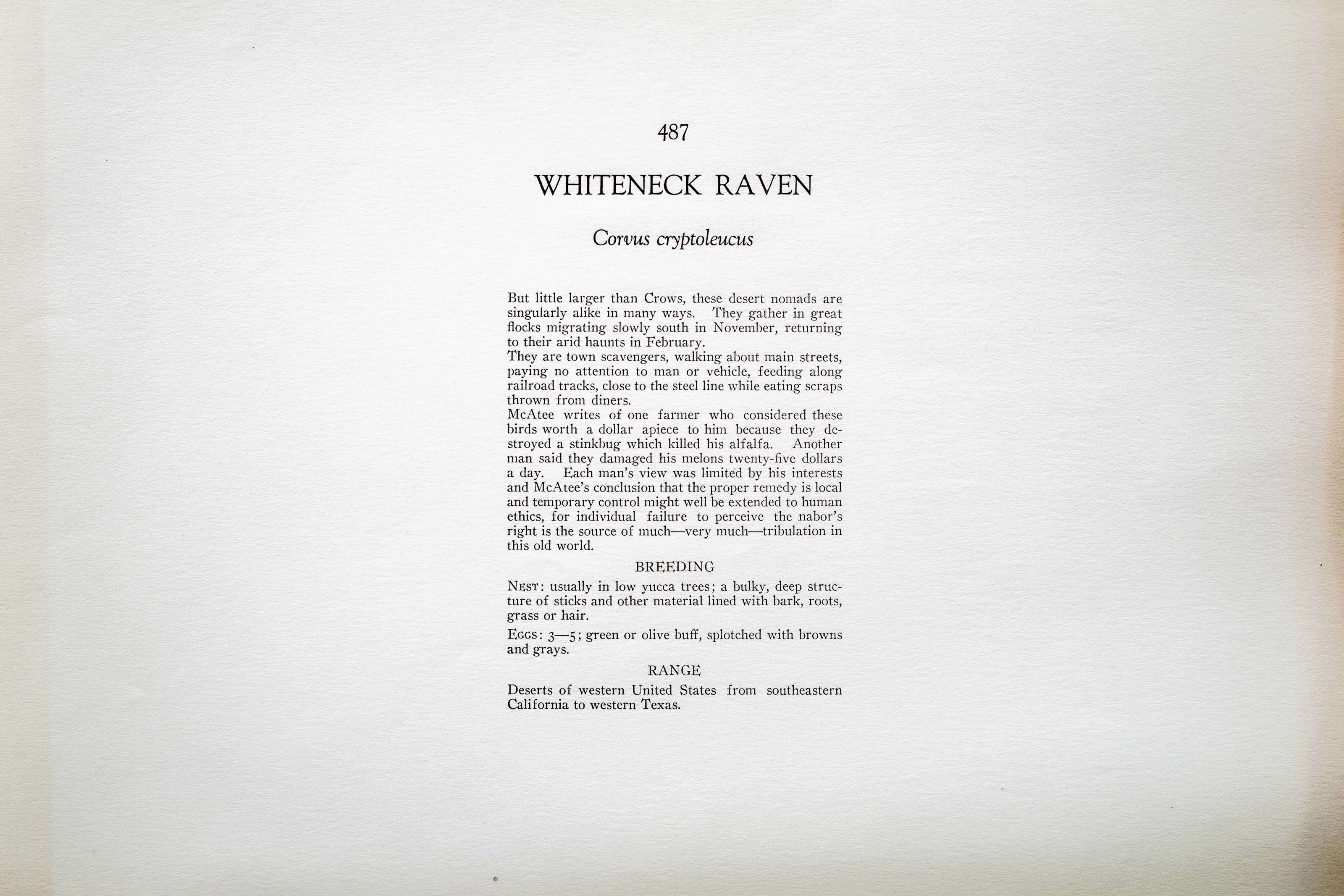






1917
1931
8
487
A team of dedicated board members, volunteers, and student interns has published every page in Volume 9. This volume includes 360 images of paintings and lyrical descriptions of birds, now available online for everyone to enjoy anywhere in the world. This is a monumental task. Each volume requires approximately 400 hours to photograph, edit, transcribe, catalog, and publish online. We need your support to complete this work.
If you're tech-savvy, have a good eye, are meticulous with details, and love structured data, please consider volunteering by emailing us at hello@rexbrasher.org.
We encourage all bird lovers and supporters to consider a monetary donation to support our mission to make Rex's work available for everyone. You can provide a one-time or recurring donation online.
But little larger than Crows, these desert nomads are singularly alike in many ways. They gather in great flocks migrating slowly south in November, returning to their arid haunts in February.
They are town scavengers, walking about main streets, paying no attention to man or vehicle, feeding along railroad tracks, close to the steel line while eating scraps thrown from diners.
McAtee writes of one farmer who considered these birds worth a dollar apiece to him because they destroyed a stinkbug which killed his alfalfa. Another man said they damaged his melons twenty-five dollars a day. Each man's view was limited by his interests and McAtee's conclusion that the proper remedy is local and temporary control might well be extended to human ethics, for individual failure to perceive the nabor's right is the source of much — very much — tribulation in this old world.
NEST: usually in low yucca trees; a bulky, deep structure of sticks and other material lined with bark, roots, grass or hair.
EGGS: 3–5; green or olive buff, splotched with browns and grays.
Deserts of western United States from southeastern California to western Texas.